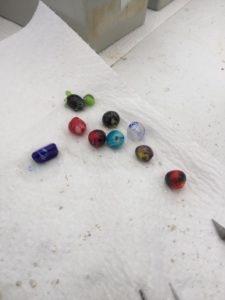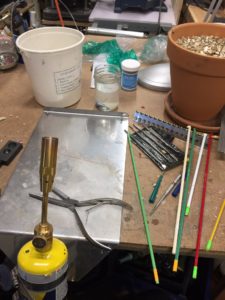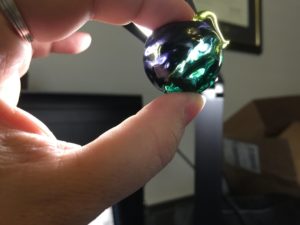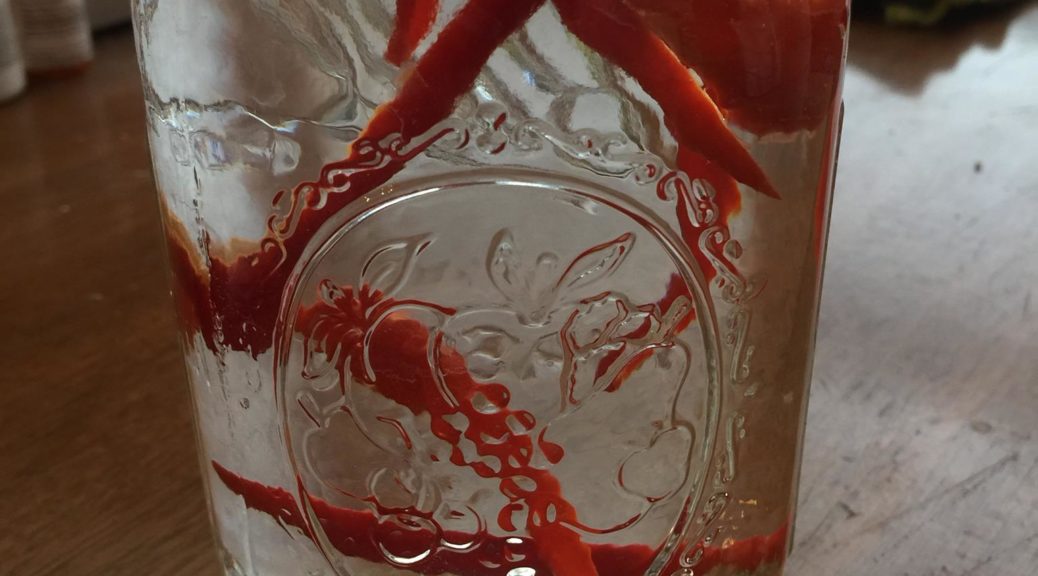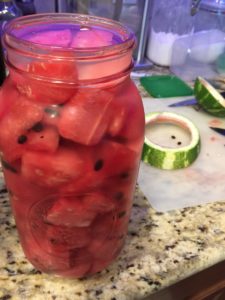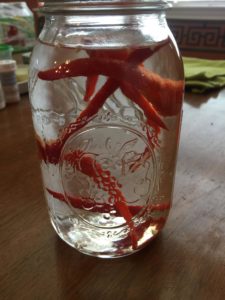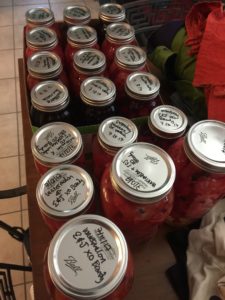Hey folks! If you haven’t seen my mundane/camping-side Pennsic Prep post, check it out here.
As with my camping post, this post operates merely as a jumping-off point. Please feel free to use it, customize it, disregard parts as you see fit. This is simply to get you started.
This post will also operate from the presumption that you’ve been playing in the SCA for a little bit and maybe have a couple of outfits, but have not been to a big war. If Pennsic is your first-ever event, hopefully you’ll have someone guiding you through who can loan you some garb to help fill out y our wardrobe a bit. If you’ve been in the SCA for years and have multiple outfits… I hope you’ll find this useful, anyway. Maybe it will encourage you to pare things down for Pennsic.
Okay! Let’s get started.
Notes
First of all… all we ask is that you make an attempt. An attempt. Believe me, most of us who have been in a while can spot a newbie from a mile away and, in some ways, it’s actually helpful. You’ll get folks who are excited and enthusiastic and want to help you improve your wardrobe. Of course, there are always assholes. Thankfully, they are few and far between. Most of my friends know me as a historical accuracy nut. I hand-stitch most of my garb, do sheep-to-shawl, weave my own fabric, etc. I’m hardcore — and I don’t expect anyone else to be. Play your own game at the level you wish to play.
If anyone gives you a hard time for your clothes, kindly invite them to purchase a new outfit for you, if they’re so concerned about how you look. Or make you one. And anyone close enough to critique your stitches is close enough to get hit. Just sayin’. (Please do not hit anyone unless they have consented to that.)
All we ask is you try for a pre-1600 outfit. Pennsic is a bit more forgiving than other SCA events might be, but we still ask that you not walk around in jeans and a t-shirt (and truth be told, you’ll be WAY more uncomfortable in mundanes than medieval clothing).
Pennsic is generally warm. Highs are usually anywhere from the mid-70s (24C) to low-90s (33C) during the day. It generally gets down into the mid-50s (13C) at night. However, it’s been as warm as 100 (38C) and down to below freezing at night. It’s generally fair, pleasant, and with occasional rain showers. Pennsic has also had microbursts that flattened encampments, frost in the mornings, nonstop rain that sent cars slipping down the parking hill in the mud, windstorms, and heat waves so bad they canceled fighting for most of War Week. All of this is to say that you need to prepare for just about any weather, layer up, and check the weather report before you leave.
Anyway, let’s talk a bit about material.
You’ll want to go with a natural fiber — linen, wool, silk, bamboo, nettle, cotton — whenever you can. Natural fibers are much safer in a place with so many open flames. If a natural fiber catches on fire, you only have to pat it out (or stop, drop, and roll if it’s gotten bad). Synthetic fibers such as rayon, nylon, etc. will bubble and melt, sticking to your skin. It is much, much worse. Plus, synthetic clothing is far more likely to go up in flames. Natural fibers smolder.
Linen is by far your best choice for the layer closest to your body. It wicks and cools and will help keep your outer layers clean by keeping the oils and dirt of your body off the outer layers. It acts as protection going both ways. Cotton is far less ideal (it gets really clammy really quickly) but still an option. Linen is more expensive than cotton, which I get. If you can get to a Joann Fabric with a 50% off coupon, they do actually carry some 100% linen, usually for around $15-$20/yard, which then becomes $7.50-$10/yard. Linen under $10/yard is a good deal. It comes in a variety of weights, too. Be mindful: most of their colorful linen is a linen/rayon blend. Workable, but not ideal, as rayon is highly absorbent (even more so than cotton!) and so works against the linen with regards to your comfort levels. You can get linen online from reputable vendors, although that’s a bit outside of the purview of this post.
Wool is actually fine in summer, so long as you don’t go too thick. Wool typically comes in different thicknesses. If you can get a tropical, or very thin, wool, it will serve you well. Wool is naturally water-repellent and is actually warm when wet. You can, of course, use linen for an outer layer. This is what most folks do, especially for Pennsic. Again, cotton is an option but definitely less than ideal.
I also want to note that most folks only had a handful of outer layers in-period and anywhere from three to a dozen or more shifts/close layers. You do NOT need 14 days of clothes for Pennsic, or even seven. You *need* three shifts/close layers and maybe three outer layers. Maybe. If you have more, great! But if it’s your first Pennsic and you only own one or two outfits… fear not! In the middle ages, most folks only had a couple of changes of clothes, but they might own anywhere from three to a dozen or more “shifts” — the layer of linen closest to your body. You would “shift” your closest layer at night before going to bed. This kept your bedclothes clean for longer and also meant you weren’t sleeping in filth. I recommend following this habit at War; strip down before you sleep, wipe down your body (wet wipes, damp washcloth, damp square of linen), put on a new shift, and go to bed. Or you could have an outfit you only wear to bed.
To illustrate this, I wore the same outer layer for five days in a row this past Gulf Wars (an event held in Mississippi in mid-March). Why? It was cold and pouring rain for most of the week and the outer layer I wore was the only wool outer layer I owned. I live in Ansteorra/Texas, where wool is not needed most of the year, so I only had one wool item besides my cloak. I always took the wool off at night and hung it up to dry in my tent. It was generally dry by morning. I had several people comment on how I’d worn the “same thing” every day. My response was always to point out that I’d changed my shift every night. I have several shifts in bold colors, so it was easy to tell. I never felt gross doing this, by the way. Changing the closest layer was by far the most important thing.
Clothes
We’re going to work from the inner layer out. I’ll do my best to keep things gender-neutral, although I will have to draw some things out.
- Shifts/Undertunics (3 minimum)
- This is your closest layer and one that was in use for most places and times in Europe, up through the end of our time period. There are a couple of ways to sew a shift.
- A period set of instructions
- Period Norse (Viking) tunic
- Non-authentic, but definitely passable
- You can literally fold a piece of cloth into quarters, fold a t-shirt in half, then trace the t-shirt (giving a good extra 3/4 inch for a seam allowance!), expanding the arms out to the edge and the hem as far down as you’d like it to go. Flare or not. Make it a tunic, make it a shift, make it an outer dress. Using a shirt that fits well will help immensely.
- You’ll want at least three shifts. One on, one washed/drying, and one backup. Make’em all white or do them all different colors so you can tell which one is which. Totally your choice.
- Bras (if you wear them)
- bras are not required. Many folks find the clothing they have is supportive enough without them. If you do bring them, though, bring at least three.
- I personally wear bandeau bras.
- Underpants
- natural fibers are your best bet. I like to bring enough for a full week and wash’em every couple of days. You could get away with three pairs if you were diligent about washing and drying daily.
- Folks who wear boxer, briefs, jockeys… you may find jockeys to be most comfortable at war, but I understand some folks like the breeziness of boxers or the security of briefs. You do you; just bring enough and be sure to change every day.
- bike shorts/yoga shorts/Undersummers/anti-chub rub
- some folks find that deodorant or Glide running cream works best for them.
- I bring two pairs of Undersummers and wash’em every other day. They help prevent the worst of my chub rub.
- A belt
- If you don’t have a long leather belt, you can acquire one for about $25 at Pennsic. You’ll want to be able to hang things from it, cinch your clothing in, etc.
- SOCKS (5+ pairs)
- I like to bring a week’s worth of socks.
- Do yourself a favor; if you can, don’t bring those cheap, white, cotton socks. They are not supportive, they don’t wick away moisture, and your feet will hate you if you wear them.
- Assuming you don’t have a wool allergy: wool socks. I like Smartwool or Darn Tough. Get a light or medium weight sock. You’re going to be walking a lot; you’re better off with three pairs of good, wool socks than two dozen pairs of crummy, cheap, tube socks from Walmart.
- If you have blister issues, consider Injiji or Wrightsock, which both do double-layers.
- Please see my separate post on foot care at Pennsic for more discussion on this.
- Male personas/dressing masculine:
- Get yourself at least two pairs of pants. These can be linen pants or plaid PJ bottoms (which, once you put a tunic over them, look impressively period). WASH THEM REGULARLY.
- Outer layers (2-5)
- Peplos/Bog dresses/etc.
- Fast’n’easy
- Bog Dress instructions — I sew mine up higher along the sides and often leave folds hanging down. These are nice, if long enough, as they can double as a quick hood if the skies open up.
- Can be worn on their own or over an under-tunic
- Norse smokkr (AKA the apron dress)
-
- These take me about 90-120 minutes to make.
- There are several theorized ways that can be easily googled. I use this one or this one.
- T-tunics
- Fast’n’easy, can knock’em out quickly
- Head covering
- Just about any look (for whatever gender you are!) is vastly improved by the presence of a head covering.
- What you use will depend heavily on your presentation, era, etc.
- Norse: Dublin or Jorvik hood (all genders; a great hand-sewing project), large rectangle tied at the nape (women), large rectangle knotted (women), six-panel hat (men)
- Generic medieval: coif (all genders), wimple (dozens of styles; if you’re going for quick-n-dirty, a long rectangle can be properly wrapped around the head), veil (women)
- Head covering will depend greatly on your era and location — but a quick internet search should turn up plenty of results.
- Shoes
- Don’t feel obligated to own period-authentic turn shoes. If you decide you want a pair, there are a half-dozen shoe vendors at Pennsic.
- If you have medical issues that require you to use sneakers or orthotics… use them.
- If you can, though, avoid wearing neon/brightly colored shoes. A pair of black sneakers or those non-slip work shoes (used in service jobs) will go miles towards both your own comfort and not breaking others’ experiences with obvious mundanity.
- I personally wear a pair of low-shin leather boots from Teva with a zipper up the inside. They look medieval, are waterproof, and are comfortable as heck because they’re broken in.
- Err on the side of foot coverage and leather.
- Rain shoes
- Whether you wear galoshes/wellies, have pattens, or just slog it out, you should have a plan for what you’ll wear on your feet when it rains. It can get pretty muddy. On rainy days, everyone just ignores the galoshes because we all understand that comfort and safety is more important than looks.
- 1 set of mundane clothes, sealed in a large ziploc bag.
- if possible, store in your car. A lot of folks do this and then change once they’re about 20 minutes off-site after Pennsic so they have clean, dust-free clothes to put on.
Accessories
- Parasol, straw hat
- I bring both, but I’m also blindingly pale.
- Protect yourself from the sun. A good cloth parasol or a wide-brim straw hat will serve you well and both are totally period.
- Mug or goblet
- I tend to keep a mug in-camp and carry around a metal goblet. The mug is ceramic and the goblet has survived falling into a six-foot deep ditch, so I feel good knowing I’m not going to end up with a broken mug if something happens.
- Either way, you’ll want a way to drink water or anything that’s offered to you. There are often water jugs set up all over Pennsic that you can use… if you have your mug with you. Carry a water vessel of some kind.
- Some folks like to buy a mug from Beast & Boar in the food court. You get free drinks from them for the duration of war if you do (lemonade, water, etc.). I’ve never done this for various reasons, but you may find it suits you well. If you do get one, buy the insurance. That way, if it breaks during War, you get a free replacement.
- If you have a tasting mug (about the size of a shot glass; there are vendors at Pennsic who sell them), be sure to bring that. Great for trying booze at someone’s camp without committing to more than a sip.
- Linen napkin
- Handy to have, especially to cut down on paper waste in the food court. Throw your napkin over your shoulder and wipe your hands as you eat!
- Cloak
- A circular cloak is nice, if you have the time to make one. It’s also a great beginner’s sewing project. Do make sure you make this out of wool.
- Medieval cloaks did not have attached hoods. Most folks will overlook this, but it’s worth knowing.
- Early period cloaks are basically large rectangles. They were often collected at the shoulder of your dominant/sword arm with a brooch or pin. You could use a wool blanket (navy blue, a dark/earthy plaid, or similar would blend best) and buy a brooch or pin to hold it in place.
- Hood
- There are dozens of hood styles. The easiest one to make is the Skjoldehamn hood, which is basically a series of rectangles. If you make it to “SCA” size (rather than its authentic size), you’ll find it’s breezy and comfortable. I have one with a linen lining and wool outer. Very comfortable and nice. (I also made one in its authentic sizing but it’s best for cold winters.)
- This is a pretty quick and easy sewing project on a machine, and a great opportunity to practice hand-sewing if you like, especially the more visible parts like around the face.
- Recommended: a thin wool for the outer layer and linen for the inner. This way, it can help to keep you warm at night when out and about and should shed water well. (If you’re concerned about whether it will shed water, you can always treat the fabric with water-proofing spray or lanolin.)
- Jewelry
- Necklaces, bracelets, oath-rings, turtle brooches, pins, clasps, rings, etc.
- If you need a way to pin your bog dress or smokkr closed until you can acquire some turtle brooches, you can purchase some large pins/brooches from a craft store. Look for natural materials (wood, bone, metal, tortoiseshell, etc.) and buy two. They’ll tide you over until you can purchase something more authentic. Remember, it’s often about decreasing obvious mundanity, rather than necessarily looking 100% authentic.
- Basket
- You’ll want a way to carry your shopping and various things around Pennsic.
- You’ll see a LOT of folks have baskets from The Basketman. He’ll be there and his stuff is awesome — but the prices reflect that.
- I waited until my second Pennsic to buy my purse from him. And I still have a hand basket I use to carry stuff around in.
- You’ll want something big enough to hold your purchases but not so big that you’ll be tempted to weigh it down. I used a cheap-o picnic basket my first year.
- Goodwill and other thrift stores usually have baskets available for cheap. Just make sure it’s not busted up or the handle’s at risk of going out.
- I keep a smaller, closeable basket (called a “housewife”) in my bigger basket. It’s full of my sewing kit — linen thread, beeswax, needles, naalbinding needle, tiny shears, a bit of wool, etc. If you’re not a handsewer, you may still find it useful to keep a small sewing kit on-hand for repairs.
Remember, at the end of the day, it’s about a good attempt. If you have loads of cash and don’t want to do a lot of prep, you could basically put one outfit together on your own (which could be as simple as a bog dress) and buy everything you need once you get on-site. There are loads of clothing and accessories vendors who would be happy to exchange money for their product.








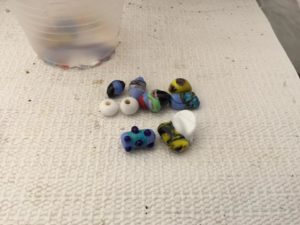
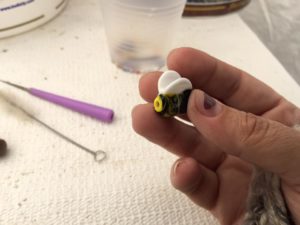 Second bee effort
Second bee effort